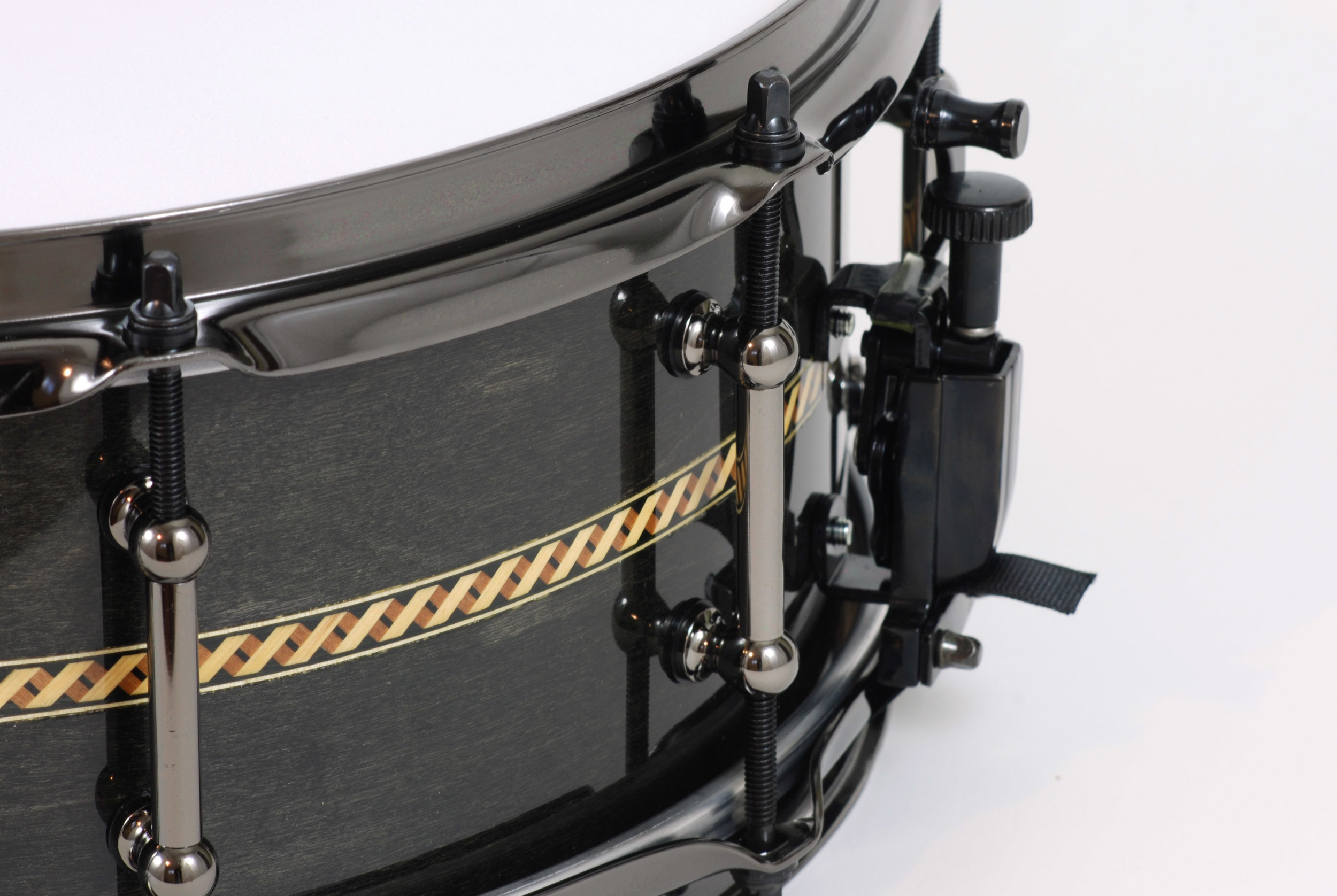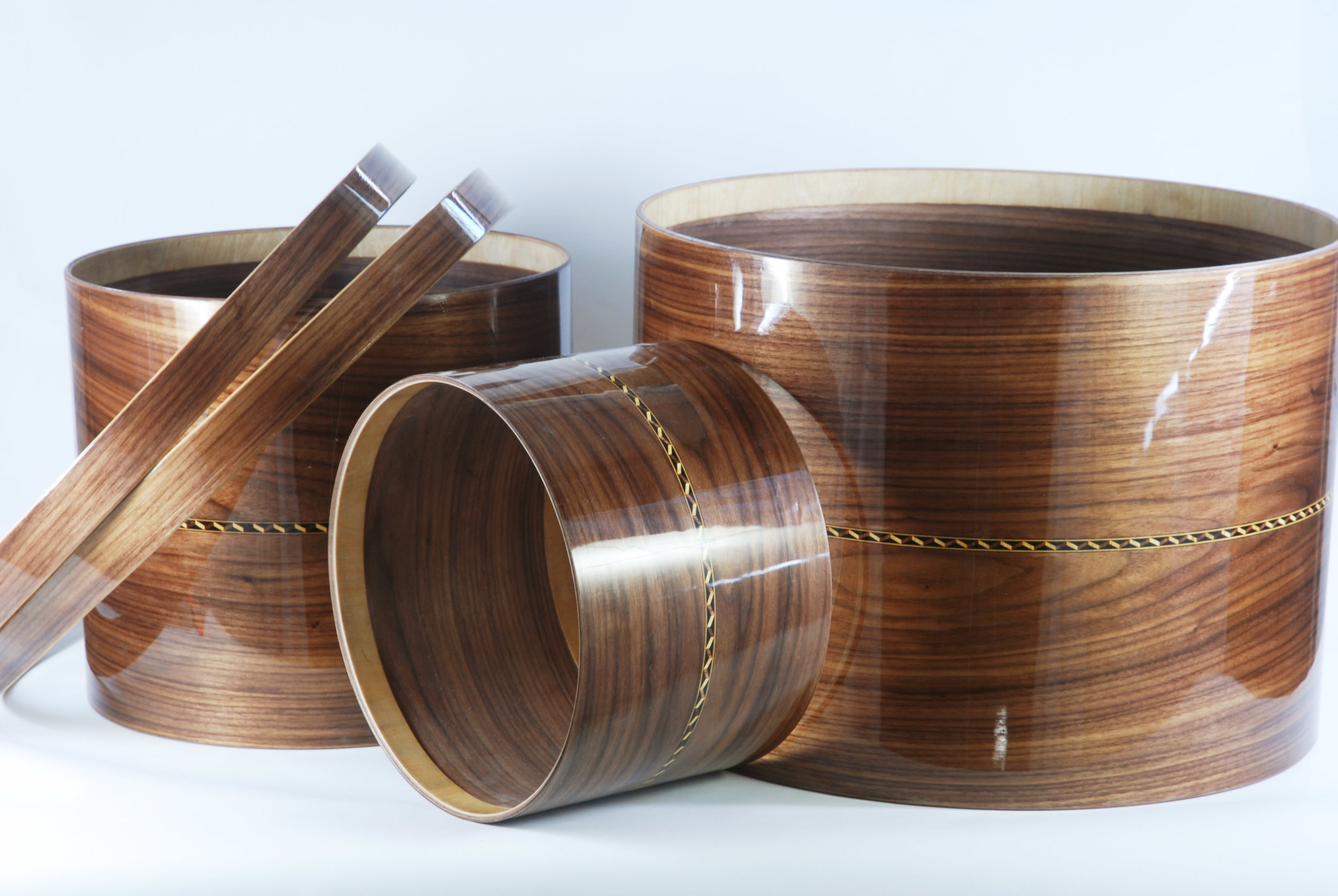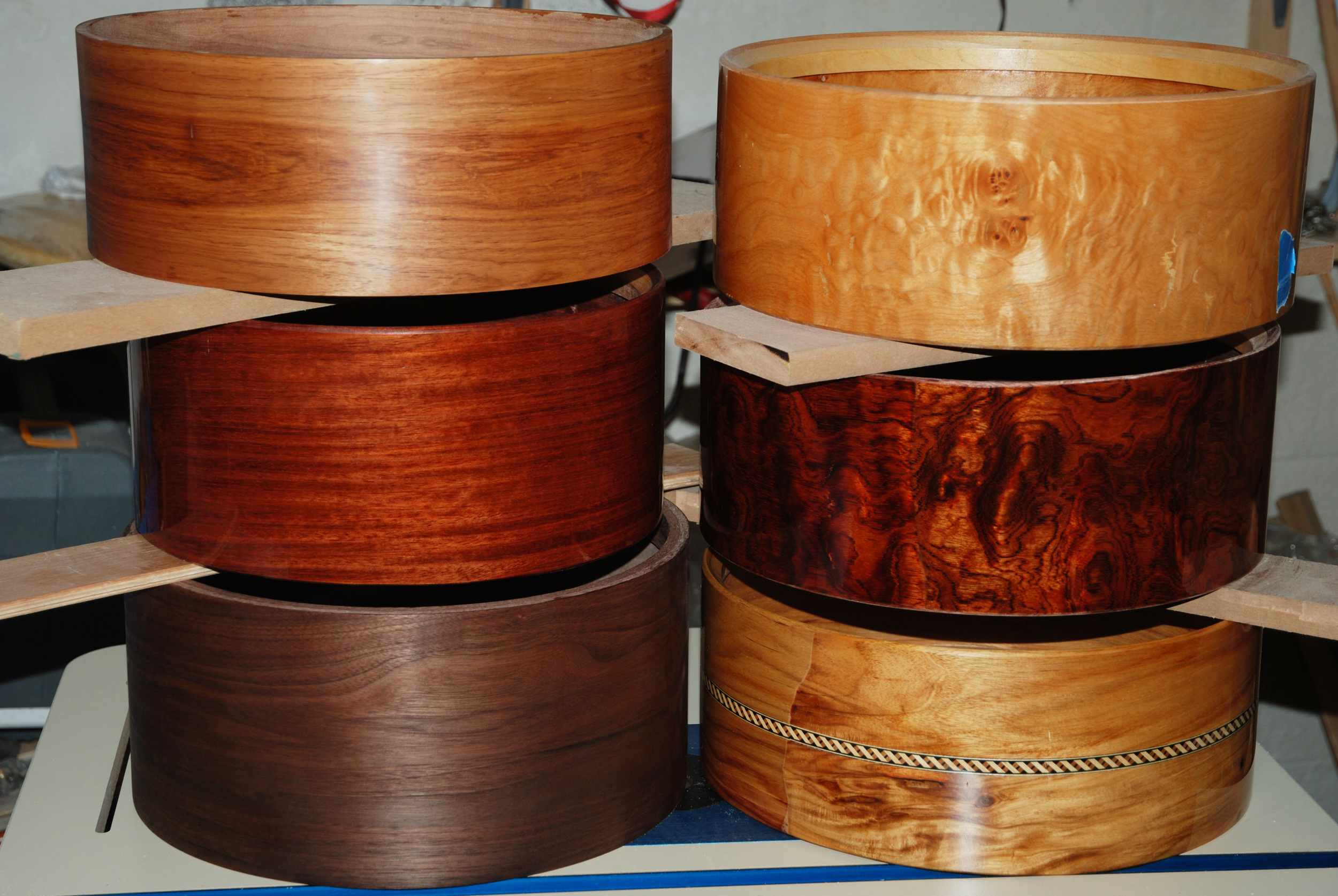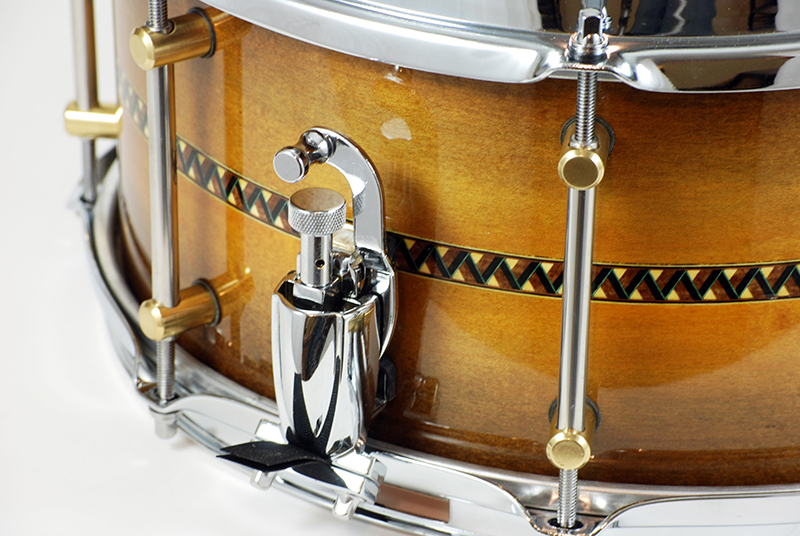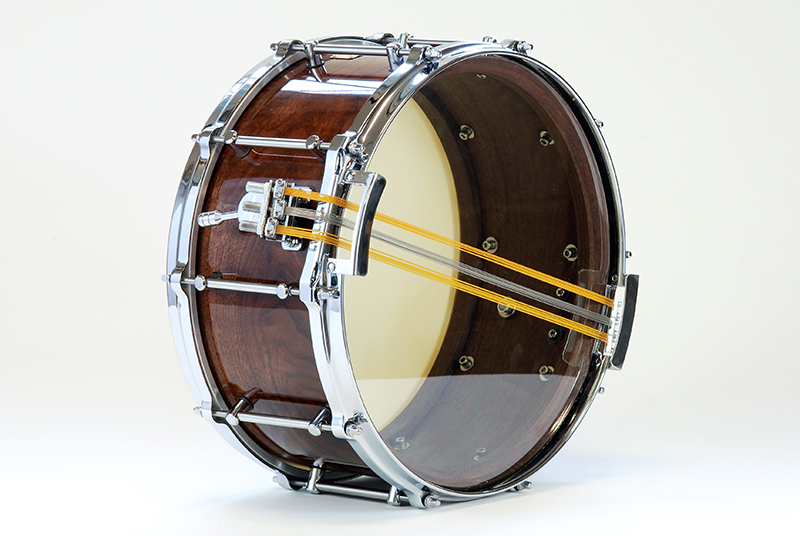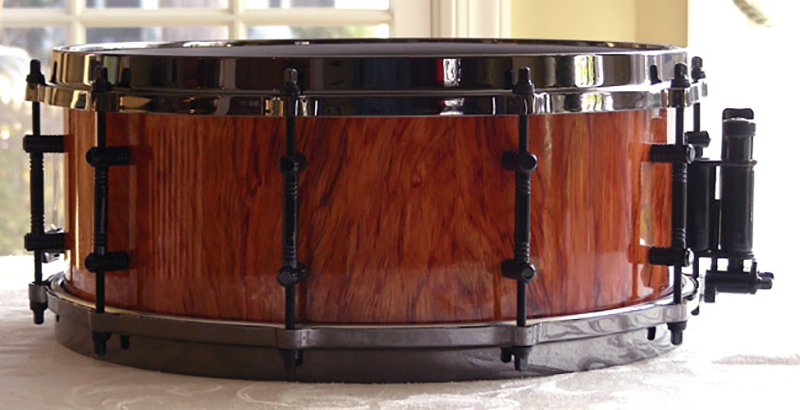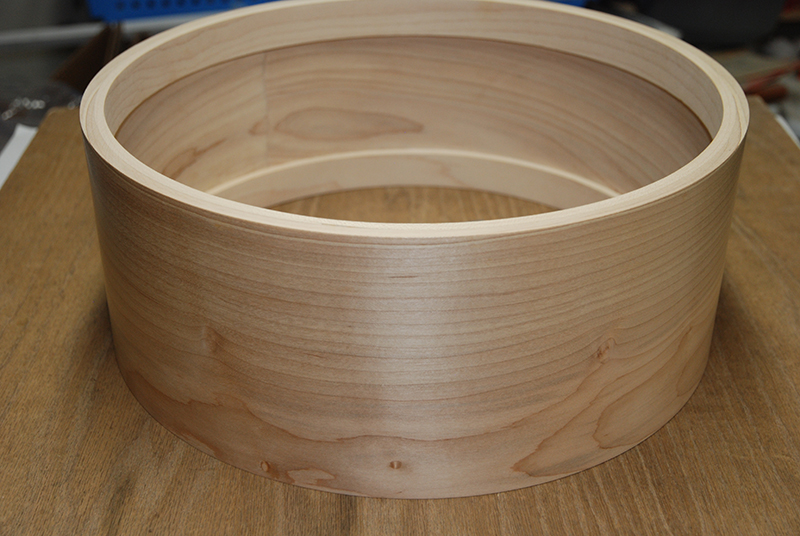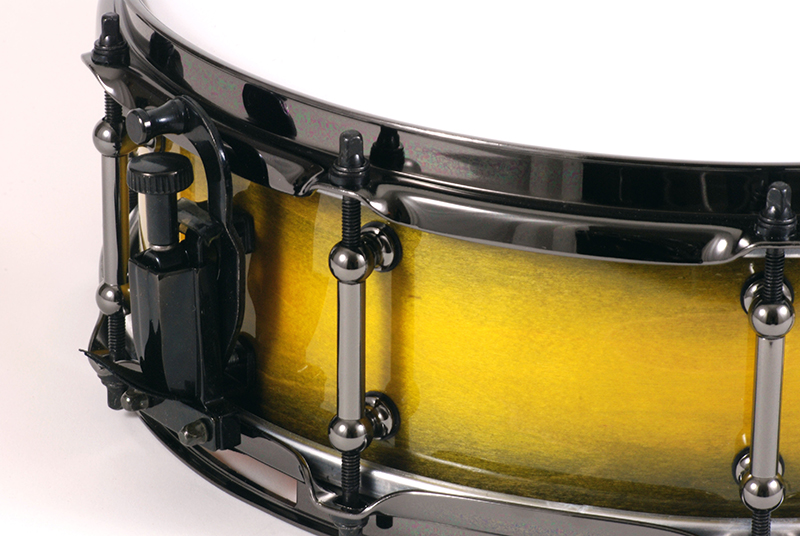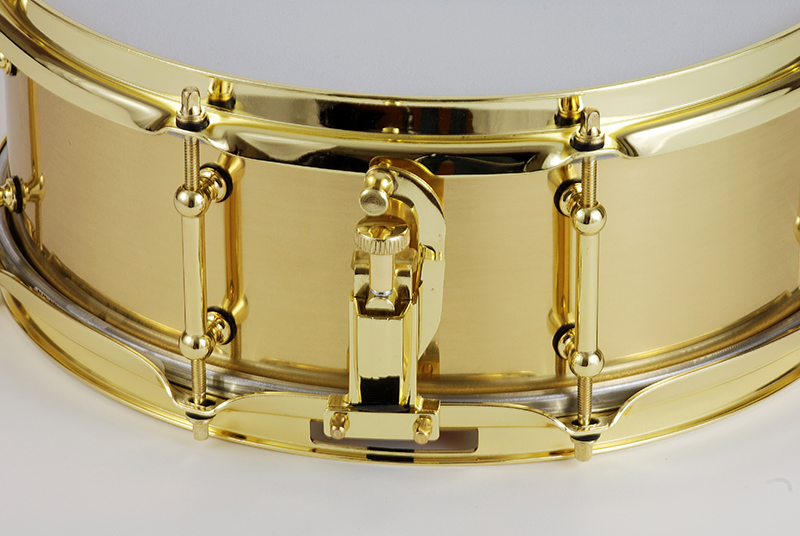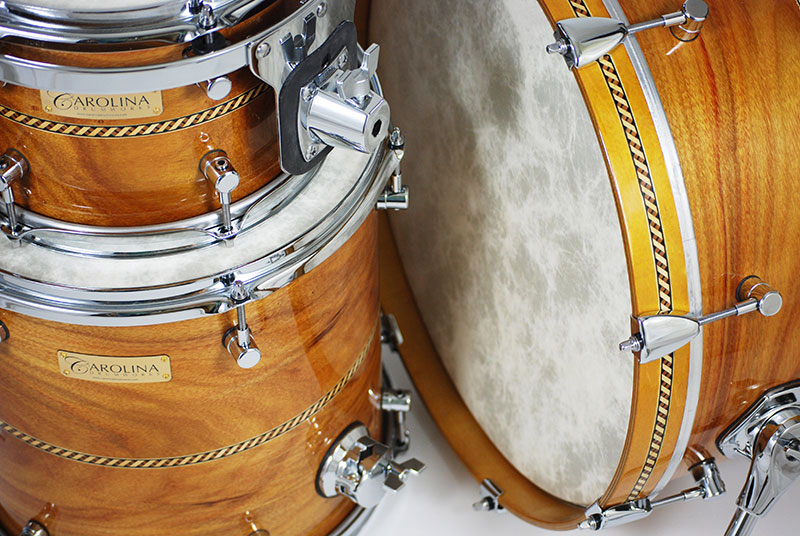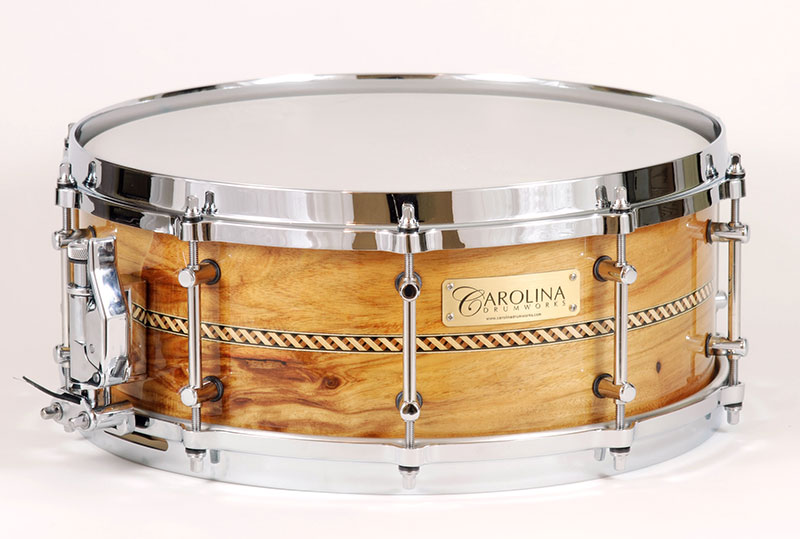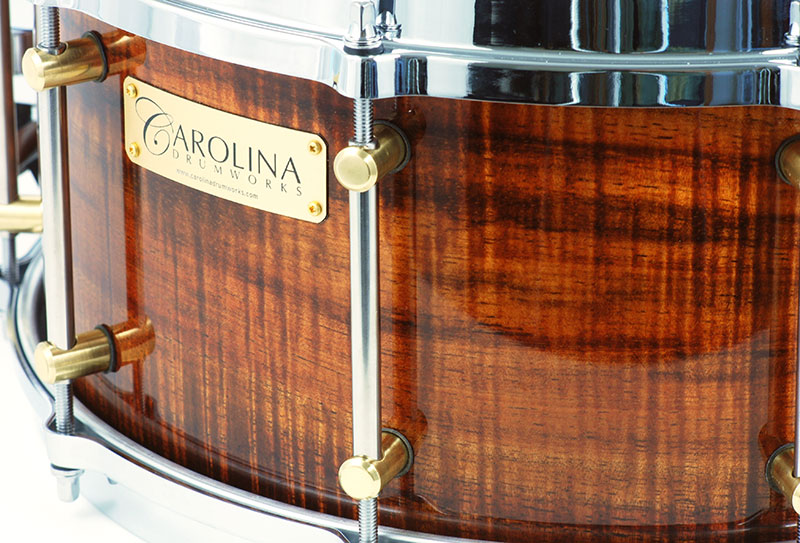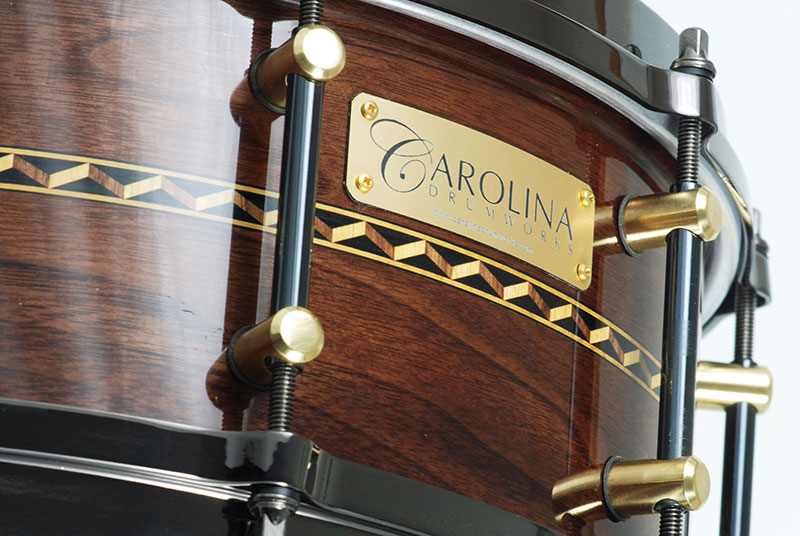I was in a conversation with a jeweler, an older man, talking about taste. He said, "Let me give you a word of advice. You need to decide whether you want fashion or style."
Read moreBuying Custom - part 3: Designing your drums
How are you going to use these drums? Think about whether you’re going to be playing primarily live acoustic, live amplified, or in the studio. Maybe it’s a combination of these, but you should have an idea of primary uses and priorities. Some uses call for more emphasis on tone, others require more projection, and where that balance falls will have a lot of influence on your design.
Read moreBuying Custom, Part 2: Choosing a builder
If you’ve decided that custom drums are right for your needs (see my previous article) it’s time for a critical next step: selecting the builder to work with. It’s not always easy. There are a lot of custom builders out there, with new ones entering – and other leaving – the marketplace every year. So making wise choices means doing your homework.
Read more
Buying Custom: Are custom drums right for you?
I’m not here to say that everyone should have custom drums. It’s a very personal choice and it really depends largely on your priorities and expectations. If you’re considering going the custom route – now or at some time in the future – check off the pros and cons as they relate to you personally.
Read moreCustom Drums: Really, Why So Pricey?
At one point in my life, I worked for an advertising agency – you know, the Mad Men thing. (Yes, there really were three-martini lunches.) A lot of prospective clients would ask us, in the course of getting acquainted, “How much is a brochure?” And the head of the agency would always answer, “How much is a car?” or whatever the client sold.
The answer depends completely on what kind of brochure, or car – or drum – you’re talking about. It’s all relative, and all about your needs, your goals, and your priorities.
My last article, about why custom work takes time, led me to another basic question: why custom drums cost what they do. You might find, or have found, yourself experiencing sticker shock over the price of a custom kit or snare. But usually that’s about expectations; you may be comparing the price to mass production drums, or you may be comparing the price to doing it yourself. But, in either case, why the difference? Let’s take the case of custom vs. mass-produced. Really, when you stop and think about it, why can’t the small, independent companies get the job done for less than the big guys? They’re not carrying the payroll, advertising expense, or sales teams. They’re not paying for big facilities or a huge stockpile of parts.
So why can’t they make a drum for less? It’s largely a question of scale and capital investment. A big company can commit lots of money to major orders from a supplier, and they may even have a financial interest in the supplier’s operation. Being that important to a supplier means they’re in a position to negotiate very favorably on terms and pricing. There are also advantages in limiting the choices – a major manufacturer is rarely going to offer more than a couple of lug styles, and usually only a few shell types, allowing them lots of inventory without the risk that it’ll sit on the shelf unused. So ordering ten lugs (small inventory, wide selection) produces a very different per-unit cost than ordering ten thousand lugs (big inventory, narrow selection) does; the pricing advantage goes to the big guys.
And, yes, the large manufacturer’s investment in tools and equipment is enormously higher. But paying for those investments has to come out of sales, so the smaller shop’s equipment cost might be divided over a few hundred kits sold over a period of time, while the big brand’s investment is covered by thousands of kits over a similar period, lowering the cost each sale needs to cover.
And then, of course there’s the question of labor cost. A big manufacturer needs to maximize efficiencies and minimize hours in order to meet a specific competitive selling price. A small builder, on the other hand, may want to put in more time because it allows the most effective end result for him, or because he’s addressing details that are not cost-effective for mass production, or even because he loves the actual hands-on process more than the business-operation side. I remember a conversation with a builder who told me he could wrap an entire kit in under an hour – and my reaction was, “What’s the fun in that?”
That brings me to custom vs. do-it-yourself. In this case, the comparison just isn’t fair. Yes, you can say that DIY is a way of saving all that labor cost, but it’s not exactly an apples-to-apples thing. You may have tools to build with, but the odds are good that the builder has tools that are more precise, more controlled, and better set up than yours. And in many cases, the builder may have access to parts, materials, or services that you simply can’t get.
Admittedly, doing it yourself saves on the overhead even a small builder has to cover – dedicated work space, maintaining shop materials, financing cash flow, managing bookkeeping and correspondence, website, etc.
But in terms of labor, the number of hours is only part of the story. A good custom builder brings a lot of background to your order. He’s seen different grades of parts and knows the ins and outs of working with them. He knows dozens of nuances about fitting and finishing, and the behavior of materials and shapes over time. He knows how to make design decisions to help get you the sounds and performance you want. It’s part of what he charges for – expertise that gets you much more than just a drum. Yes, you can put it together yourself, and you can even farm out some services like edging, drilling, and wrapping, but a good custom builder brings much more to the equation and the end result is not the same, even though the parts might be. So when you judge the price of a custom drum or kit, don’t evaluate it in the context of the price of a mass-production item or the cost of doing it yourself. Judge it in terms of its value to you – if it costs more, are you getting more? Is it better quality, better designed, or more exactly what you want? Does it perform better, feel better, or sound better? If the answer is yes, you may actually be getting more for your dollar from custom drums.
Why does custom take so darned long?
One thing that’s common with today’s consumers is that when they want something, they want it now. I blame technology – buy an item on-line and it’ll usually be pulled from stock, packaged up, and started in the shipping process within hours. That new norm has changed our expectations enormously.
The same thing holds true when you’re buying drums. Buy from a brick-and-mortar store and you take them home with you. Buy on-line and you have them within a few days. If they’re not in stock, the retailer can usually special order from the manufacturer and get them to you in a few days or a few weeks.
But order something from a custom builder and it can seem like someone slams on the brakes. Suddenly you’re talking about anywhere from several weeks to several months, and you feel like the kid in the back seat of the car – are we there yet, are we there yet?
Frustrating, for sure. But knowing what to expect and how to participate in the process can help a lot.
Understand that drum building is not an industry of enormous factories and many thousands of workers. It’s mostly a community of very small shops and tiny staffs. Even many of the well-known builders are much smaller operations than you’d think. That means that if someone’s out sick or there’s a personnel change, it can affect the production schedule. Major weather problems can affect the production schedule. Specialized tools and their maintenance can affect the production schedule. Material shortages or subcontractor delays can affect the production schedule.
So, really, why does it take so long? Most of those how-it’s-done videos seem to have the drum finished in a matter of hours, if not minutes. Maybe, you wonder, the builder isn’t organized, or doesn’t want to work hard, or isn’t a stable business, or just doesn’t care. But, overall, the reality is that the custom build is a very different process from mass production.
Bear in mind that with mass production there are routine materials, sizes, components, and processes – a lot gets done with programmed machinery, templates, and assembly-line setups. But when you’re talking about custom, made-to-order work, it’s difficult to standardize production because of the frequent need to modify setups and processes.
For example, mass production of wood shells usually involves only a few species to choose from. But if you decide you want something different, a custom builder is going to have to source raw materials especially for your order. Specific dimensional requirements (and appearance, for anything that’s not covered by wrap, paint, or veneer) mean it’s not just a matter of popping out to the nearest home improvement center.
And actually making a shell can be a long process as well. If you want something that’s bent, glued, or molded, the material has to be shaped, sized, and fine-tuned to be within specifications. If it’s solid wood, it may need to stabilize for days at a time, or have moisture content slowly altered at certain stages. Occasionally, there can even be a failure – imperfections or weak spots inside the material that didn’t show on the outside, stresses during the process that damage the material, or sections that aren’t stable until fully assembled.
Your order might require special wraps, designs, artwork, etc., that can take time – sometimes a little, sometimes a lot – or specialized hardware that has to be fabricated. Even with mass-produced, relatively standard parts there’s always the possibility of a back order or limited availability. And pulling together all the materials and components for your project could involve a fair amount of shipping time in addition to fabrication time.
Then you may want special fittings, such as reinforcement rings, inlays, decorations, and so forth. Some of these take only an hour or so to install, others can take days to complete. And any custom parts usually mean there’s custom layout and drilling involved as well. Simple wraps can be installed quickly, but some finishes involve mixed materials, custom-blended tints, multiple applications, or lengthy curing times.
So it’s sounding like there are no reasonable limits on how long a custom order can take, right? Well, there are a few things you can do to help this process along and make it more comfortable and enjoyable for you. After all, it’s not just the builder’s project; it’s yours, too.
- You probably asked at the beginning for a rough estimate of how long an order would take. But once all of the final specs are agreed on, ask whether anything has altered that projection.
- If the adjusted timeline sounds longer than you’re comfortable with, check to see if any changes in the design might speed up the process.
- Once things are underway, don’t hesitate to ask for updates on progress (within reason, of course). Sometimes a normally slight delay turns out to be longer than expected, and you’re entitled to know what’s going on. If there’s a roadblock, the builder should be willing to tell you what it is and what solutions he’s pursuing. (And, yes, there are such things as unreasonable or avoidable delays that you shouldn’t have to accept.)
- Lastly, do your part to keep things in motion: respond to questions, raise concerns, don’t keep rethinking your plan once it’s underway, ask for information when you need it. A custom drum project should be a collaborative partnership between artist and artisan – and that’s an approach that can give you a great experience as well as a fine instrument.
Is it custom? Is it boutique? Does it make a difference?
I live in an area that has a lot of local breweries, and people around here talk and write about beer a lot. So recently, when I saw an article about the blurring of lines as to what’s considered a “craft brewery” and what isn’t, I realized that there’s a connection between drums and beer that I hadn’t considered: confusion about industry categories and how to describe them.
Read moreIncluded with Your Custom Drum: Custom Advice
They say the Internet has changed everything.
On one hand, that’s a good thing. It gives us a ton of information we never had access to before. We’re way better informed than we used to be. But on the other hand maybe there are times when we’re actually over-informed – to the point of getting distracted from what we’re really trying to accomplish.
This may sound like I’m some kind of wet blanket telling kids to turn off the computer and go outside to play. But actually I’m wondering whether some drummers in the Information Age are getting distracted with how their drums are made instead of focusing on the art of playing them.
The more products we study and buy online, the more we find ourselves shopping for specifications instead of overall performance. We do it with electronic gear, household gadgets, tools and more – and we’re starting to do it with musical instruments like guitars and drums. But, if you think about it, most things that help express our personal style – clothing, furniture, food – we tend to choose not by specifications but by their overall performance: the look, the taste, the touch, the experience. And, honestly, what can help express your personal musical style as much as the instrument you play?
A few years ago, I was watching a top-ranked artist who had just finished a clinic at a major drum show. He was sitting in a drum builder’s booth checking out a snare, and the builder was explaining that the snare in question was a stave drum.
Blank look from the artist.
So the builder showed him the inside of the drum, pointing out the staves and explaining the advantages.
Another blank look from the artist.
It was like they were talking in two different languages, one the language of design specs and the other the language of performance. The architect and the homeowner, if you will. Watching them, I was reminded that, not so many years ago, drummers didn’t pay much attention to how a drum was made. They just played, and they wanted to play drums that sounded and felt good – musicians looking for the best musical instruments they could afford. Most of them didn’t know the difference between ply shells and solid shells. They had no idea what kinds of wood were being used, or how the edges were cut, or how much drop there was on the strainer, or where the vent was positioned – and they didn’t care. Play a top-level drum and it sang for you and it did everything you asked of it. What else mattered? “This one, man, this one’s got that sound!”
As a builder, I welcome discussion about edges, dimensions, materials, tuning techniques and so on, because this stuff fascinates me. And it’s good that players want to talk about these things. Like most of my drum-building colleagues, I like having informed customers. It helps them appreciate the value of owning a custom or boutique instrument.
But today, by way of blog articles, discussion forums, how-to videos and advertising, the science of drum design has gone public. Maybe even a little too much.
Think about this: Should you order a custom made suit and specify what kind of stitching to use? Or visit the restaurant kitchen to tell the chef how you want the seasonings measured in your entrée?
Take a double 45 bearing edge profile, for example. You might shop for that because you’ve heard that a double 45 edge is a good thing – but you may not really know how it works, or what alternatives you should consider. (Want to really get technical? On that double 45, where is the apex positioned, and how wide is it? Is there any roundover, and if so how much? How is the edge smoothed and finished? Those kinds of details make a difference in how that double 45 functions. Trust me, to a knowledgeable builder the phrase “double 45” is a starting place, not the real spec.)
Whoa. TMI alert! Let’s back up a second.
You may have heard about synergy – the concept that the whole is greater than the sum of its parts. Synergy is an important aspect of drum design. There are literally dozens of design choices that influence the sound and character of a drum. Individually, most of these choices have very small effects on the overall sound. But taken together, they can reinforce one another, working together to make the drum as a whole perform the way you want– or each can cancel another one out, losing the advantages altogether. Unfortunately, most online information addresses these factors individually, not in terms of how they work together. So you can easily get caught up in specifications, and find yourself shopping for a set of specs instead of for what the drum does for you – focusing on the trees and losing sight of the forest.
Let’s try a better starting point. Tell me your destination, not your route to get there.
How will you use the drum? What type of music? What type of room? What playing style? What sort of voice should it have? Where would it fit into the rest of your drum arsenal? How should it feel to play?
Here are the kinds of information that help me as a builder: “I need a bright sound.” “Looking for power.” “I want it real responsive for ghostnotes.” “Something beefy.” “I do a lot of cross-sticking.” “I tune very tight.” “I like a lot of ring.” “I play mostly small clubs.”
My advice? Find a builder who knows his craft and talk to him. Open up about what you’re trying to achieve; put your goals together with his solutions. Sure, go ahead and ask about specs, and keep asking until you understand what makes your instrument tick. By all means, be an informed consumer. But don’t feel that you have to make all the technical design decisions before turning them over to the builder, or that you need to become an expert yourself in order to make good choices. Instead, tap into his experience and knowledge base and use them to your advantage.
Then turn off your computer and go out and play…drums.

